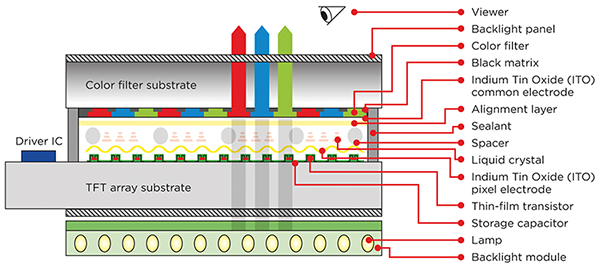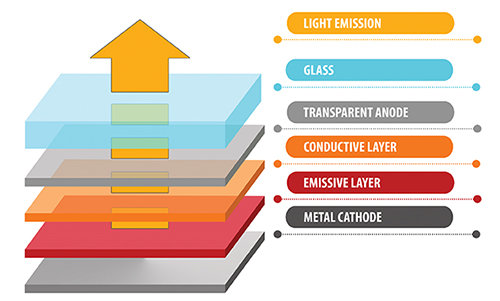|
The OP
Published on 2019-7-16 21:33
Only look at the author
This post is from RF/Wirelessly
| ||
|
|
||
- 【Posts】How to choose the right display technology for IoT devices
- 【Posts】Bluetooth vs. WiFi: Choosing the Best Option for Your IoT Device
- 【Posts】Display technologies for IoT devices
- 【Posts】Choose IoT Development or Software Development? What is the difference?
- 【Posts】MicroPython Hands-on (28) - Yeelight for the Internet of Things
- 【Posts】MicroPython Hands-on (26) - OneNET of the Internet of Things
- 【Posts】MicroPython Hands-on (31) - Easy IoT
- 【Posts】MicroPython Hands-on (27) - WeChat Mini Program for the Internet of Things
- 【Download】How to Choose the Right Antenna for Your Handheld Device
- 【Download】Selection of data transmission methods and its technical implementation in oilfield Internet of Things
- 【Download】IoT device identification method integrating multimodal IoT device fingerprint and ensemble learning_Lu Xulin
- 【Download】Research on medical equipment operation status monitoring system based on Internet of Things technology
- 【Download】\"Big Talk on the Internet of Things\" HD Bookmark Edition
- 【Download】Noise and Power Consumption of IoT Smart Sensors
- 【Download】Bluetooth 4.0 BLE Development Complete Manual: Practical IoT Development Technology
- 【Download】Japanese Illustrated Book Series: Illustrated Internet of Things
- 【Design】#The 7th Lichuang Electric Competition# Based on STM32 IoT terminal equipment
- 【Design】Application of LDO regulator TCR3UG series in IoT device power supply
- 【Design】UnPhone, an IoT platform based on esp32s3 (with a 300-page IoT textbook)
- 【Design】Rapid-IOT drone adapter board
- 【Design】Industrial IoT Router
- 【Design】IoT gateway/communication center
- 【Circuits】How to Choose the Right MOSFET for Motor Drive
- 【Circuits】How to select capacitive and inductive components for portable systems (Part 2)
- 【Circuits】How to select capacitive and inductive components for portable systems (Part 1)
- 【Circuits】Choose a circuit design that matches your specific application
- 【Circuits】Design of hydroponic farm based on IoT
- 【Circuits】Design of water management system based on Internet of Things
- 【Articles】How to choose a suitable sensor for the IoT system?
- 【Articles】How to Harvest Thermal and Vibration Energy for IoT Devices
- 【Articles】Low-power Wi-Fi is ideal for energy-efficient IoT devices
- 【Articles】How to choose the right battery for healthcare and medical device design
- 【Articles】How to choose cooling equipment for LED display in summer?
- 【Articles】How to Choose the Right Lithium-Ion Battery for Mobile Devices
-
Display technologies for IoT devices
ConsiderIoTdevicessuchastheenvironmentalsensorsmentionedaboveThesedevicesdon’thavetheenergybudgettorunbacklit,high-resolutioncolordisplaysServer-basedbi-stabledisplayssuchase-paper,whichhavebeenahugesuccessine-readerssuchastheAmazonKindle, ...
-
Bluetooth vs. WiFi: Choosing the Best Option for Your IoT Device
[i=s]Thispostwaslasteditedbywangerxianon2023-11-1611:14[/i]Bluetoothisawirelesstechnologyprotocolthatreliesonphysicalproximitytoestablishaconnectionbetweendeviceswithouttheneedforpasswords4GHzspectrum6miles)dependingonthedeviceclassandenvir ...
-
Help! My newly bought power bank is broken!
Help,help!Thenewlyboughtpowerbankhas5V2AinputandmultipleoutputportsAfteralongtime,hefoundthatthepowerremainedat68%BecauseitwasmyfirsttimeusingitOrdidmyhusbandbreakit
- I have a question about the network port circuit?
- [X-NUCLEO-53L4A3 TOF evaluation board] 4. Simple accuracy test comparison of different targets
- 0~500V DC voltage acquisition, is the circuit diagram in the post feasible?
- [2022 Digi-Key Innovation Design Competition] Distributed Temperature and Humidity Collection System - Schematic Diagram of the Collection End
- LED flashing light control system program
- It is reported that Apple mistakenly used US dollars to settle accounts with Chinese developers, and the developers' income increased by 7 times
- Digital frequency meter
EEWorld Datasheet Technical Support
-
"Cross-chip" quantum entanglement helps build more powerful quantum computing capabilities
IBM scientists have achieved "cross-chip" quantum entanglement - successfully entangled two "Eagl
-
Ultrasound patch can continuously and noninvasively monitor blood pressure
A research team at the University of California, San Diego, has developed an innovative wearable
-
Europe's three largest chip giants re-examine their supply chains
At the Electronica 2024 CEO Roundtable held just last week, the CEOs of three chip giants, Infine
- It is reported that Kioxia will be approved for listing as early as tomorrow, and its market value is expected to reach 750 billion yen
- The US government finalizes a $1.5 billion CHIPS Act subsidy to GlobalFoundries to support the latter's expansion of production capacity in the US
- SK Hynix announces mass production of the world's highest 321-layer 1Tb TLC 4D NAND flash memory, plans to ship it in the first half of 2025
- UWB is a new way to use it in cars. Can wireless BMS also use it?
- Filling the domestic gap! China Mobile, Huawei and others jointly released the first GSE DPU chip
- Samsung Electronics NRD-K Semiconductor R&D Complex to import ASML High NA EUV lithography equipment
- Apple reveals the secret of its own chip success: competitors can't use the latest cutting-edge technology
- Problems with STM32 and passive buzzer playing sound
- Embedded Tutorial_DSP Technology_DSP Experiment Box Operation Tutorial: 2-28 Building a Lightweight WEB Server Experiment
- OPA847IDBVR op amp domestic replacement
- AG32VF407 Test UART
- [Digi-Key Follow Me Issue 2] Chapter 1: Sharing on receiving the goods
- What model is this infrared receiver? Which model can be used instead? Thank you
- Selling brand new unopened ZYNQ 7Z020 FPGA core board
- The LORA module used in the lithium battery-powered water meter setting can save energy when 100 water meters are installed in one corridor.
- I would like to ask, when a port is set to RX0, is it necessary to set the input and output direction of this port?
- Why is this year so difficult? It’s even more difficult than during the pandemic. I’m 30 and facing unemployment. I’m so confused.
- Ask about the voltage regulator test question
- [Xiaohua HC32F448 Review] About Xiaohua Semiconductor's UART interrupt sending and PRINTF construction and redirection
- 【BIGTREETECH PI development board】 HDMI output test
- 【BIGTREETECH PI development board】+08. Audio test (zmj)
- [Xiaohua HC32F448 Review] +RTC electronic clock





 提升卡
提升卡 变色卡
变色卡 千斤顶
千斤顶